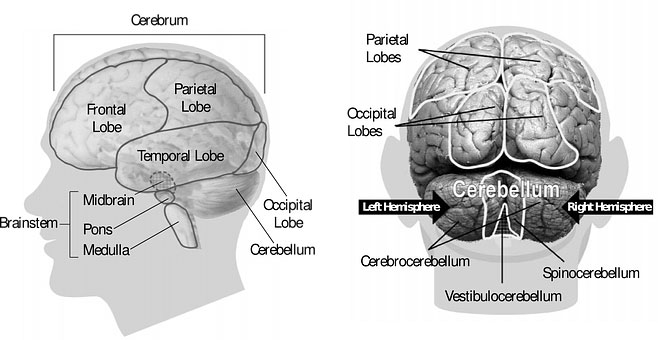
How Hypnosis Works to Improve Daily Life
The term “hypnosis” comes from the ancient Greek word for “sleep,” which is “Hypnos.” Hypnosis creates a trance-like state that brings about a heightened state of focus and concentration. When integrated as hypnotherapy, this is performed by a trained therapist who uses mental imagery and verbal repetition to achieve the desired result. When a person is under hypnosis, they feel calm and relaxed, thus more open to suggestions. Read on to learn what goes on inside our minds during this process.
How Hypnosis Works in 3 Main Steps
The idea behind the hypnosis process is to allow the subconscious mind to become motivated to stay awake while having the conscious mind encouraged to rest. Still, the person undergoing hypnosis must be in the right mental state to achieve this, and that state of mind is referred to as the trans-state.
The three main steps of the hypnosis process include:
- Hypnotic Induction— The induction is the first step involved in the hypnosis process.
- This initial phase is when the therapist gives the first suggestion.
- The first suggestion typically ignites seemingly involuntary responses.
- Hypnotic State— In this state, you feel mentally and physically relaxed.
- A sense of calm and focus takes over
- A heightened awareness occurs
- Hypnotic Suggestion— The suggestion is the third step, where the focus is mainly on the areas that need to be addressed, such as eliminating bad habits and replacing them with positive ones.
- In this step, other areas of the body may become affected physiologically, such as a lower heart rate.
- Some people are more prone to suggestion than others and will have a faster progress rate.
How hypnotherapy works when a person is in a receptive state involves the therapist suggesting ways to achieve the desired goal, such as eliminating cravings to smoke or overeat. There may be visualization techniques to help implement seeing mental images of you accomplishing your set goals.
How Hypnosis Works on The Brain
According to neuroimaging techniques, increased activity in the brain is shown during different phases of hypnosis. The areas of the brain involved include:
- Anterior cingulate cortex (ACC)— located in the front of the corpus callosum, in the medial frontal lobe of the brain
- The ACC is associated with conscious awareness and complex cognitive functions, including:
- Decision-making
- Emotions
- Impulse control
- Empathy
- Hypnosis reduces the activity in this area of the brain resulting in being able to tune out worries and stressors.
- The ACC is associated with conscious awareness and complex cognitive functions, including:
- The prefrontal cortex— located at the front of the frontal lobe of the brain.
- The prefrontal cortex is associated with complex behaviors, including:
- Predicting the consequences of one’s actions
- Managing emotional reactions and impulse control
- Planning for things in the future
- Focusing one’s attention
- Hypnosis reduces feelings of self-consciousness.
- The prefrontal cortex is associated with complex behaviors, including:
- Frontoparietal networks— located between the frontal and parietal lobes of the brain.
- The networks of the frontoparietal region are associated with control and behavior coordination.
- Controls spatial and non-spatial information
- Coordinating behavior in a rapid, accurate, and somewhat flexible goal-driven manner.
- Cognitive control and functioning including attention and working memory
- The networks of the frontoparietal region are associated with control and behavior coordination.
- Hypnosis helps control negative behavior, as well as their physical reactions to negative thoughts and other stress factors.
How Hypnosis Works to Provide Specific Health Benefits
In psychology, we know that trauma, anxiety, depression, and other mental health concerns are held within the body as well as the mind. In this way, general health conditions can stem from negative subconscious thoughts. Therefore, hypnosis offers health benefits for many ailments, some of which include:
- Eating disorders
- Anxiety
- Self-image and confidence
- Quitting bad habits
- Smoking
- Overeating
- Fears and phobias
- Pain management
- Depression
Hypnotherapy can be used in conjunction with other forms of treatment, such as cognitive-behavioral therapy (CBT) and neuro-linguistic programming (NLP).
At Miami Hypnosis & Therapy, we offer a wide range of treatments and design each plan to suit individual needs. We also incorporate blended therapies together, such as CBT and NLP, with hypnotherapy, which helps to achieve faster results. You will no longer be asking how hypnosis works, but instead, you will be asking why you didn’t do this sooner!
Our highly qualified and fully accredited staff are there to help you get past any of life’s challenges. Anna Marchenko, LMHC, M.A., Ed. M. is the primary practitioner. Anna completed her undergraduate degree at NYU as well as holding a Master’s degree from Columbia University.
Take the first step in making a positive change in your daily life by finding out how hypnotherapy works. Transform your life for the better, and book your appointment today!







Write a Comment